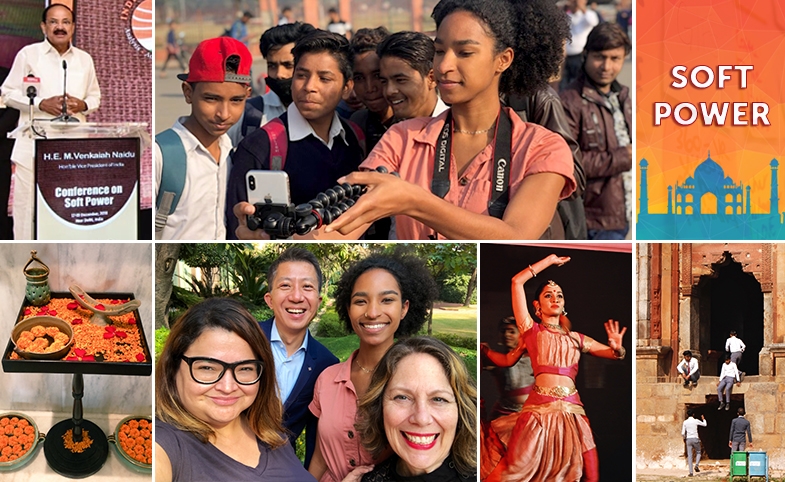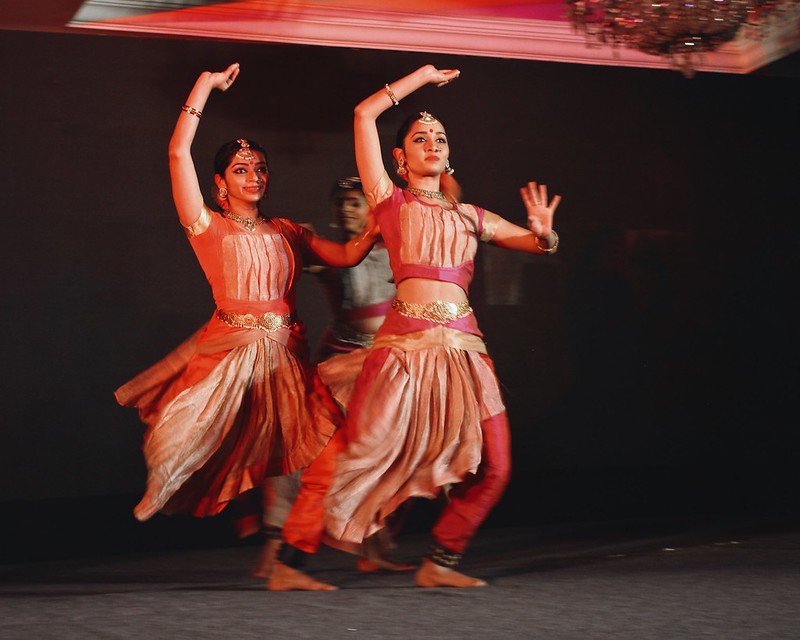COVID-19 has brought attention around the world to many Indian traditions that promote and sustain good practices for mental, physical and spiritual health. Foremost among them is the Namaste, a greeting that has been...
KEEP READINGThe CPD Blog is intended to stimulate dialog among scholars and practitioners from around the world in the public diplomacy sphere. The opinions represented here are the authors' own and do not necessarily reflect CPD's views. For blogger guidelines, click here.

Journalism Student Austin Maddox Explores Soft Power in India
When CPD Director Jay Wang told me that he wanted to speak to me in his office, I was nervous. It was only my first semester as a journalism student fellow at CPD, and so far I had tried my best to make engaging videos to bring public diplomacy to a wider audience. As I walked down the hall to his office, I ran through all the possibilities of what this confrontation could be about but, nothing came to mind. I guessed I would find out soon enough.
I shuffled into his office nervously grabbing my notebook and sat down at the small, round table in front of his desk and waited for Jay to begin telling me what I did wrong. But then, he began to talk about a conference taking place India.
He explained that the India Foundation would hold the country's first Conference on Soft Power, and because CPD is a leader in public diplomacy, we were invited to serve as an academic partner and host a panel at the conference.
Then, Jay then invited me to join CPD on their trip to India to create content about the speakers and conference attendees. “Are you free around December 17-19?” he asked. “Yes, definitely,” I said, without even pretending to glance at my calendar. I left the office excited, but soon I realized, I didn’t really know what soft power was.
The good thing about soft power diplomacy and journalism is that they’re both about finding the best way to communicate a topic to a diverse audience.
The first order of business was to do a ton of research and find out what stories would be most compelling to our audience within the context of soft power. I learned that soft power is a nation’s “ability to persuade other countries and peoples through appeal and attraction (as opposed to coercion through hard/military power).” Countries can use their culture, national values and policies to influence other nations.
Great, but how do I convey this concept in an engaging way? As a USC Annenberg master of journalism student, I spend most of my time covering race, politics and popular culture, so this was new territory for me. But the good thing about soft power diplomacy and journalism is that they’re both about finding the best way to communicate a topic to a diverse audience. I found that the best way to do this was from a multimedia angle, using videos and photographs to add multiple perspectives to the story.
A few weeks later, I packed up my camera and got on a plane straight to Delhi, India (with a minor 24-hour delay in Istanbul, but that’s a story for another day). When I arrived, I was immediately struck by India’s unique beauty. The country was covered in a beautiful yellowish-orange haze, accented by lush green trees that lined the streets. Birds sang at all hours of the day, flying over a labyrinth of cars and motorcycles moving in chaotic harmony. Being in India was truly humbling. The people were welcoming and warm, especially those who came up to me and asked for a selfie. I guess they’d never seen anyone who looked like me before, so in a way, I was representing my culture while also learning about another.
Click through the slideshow below to see photographs I took while exploring Delhi.
Though I couldn’t travel through Delhi for more than a day, the Conference on Soft Power proved to be the perfect place to learn about various facets of India all at once.
Each day, experts from industries who are essential to Indian culture—nationally and abroad—spoke about what they wanted the future of India to look like. Vikas Khanna, a chef, restaurant-owner and judge on MasterChef India, talked about taking Indian food to the next level with fast food restaurants. Then, entrepreneur Manish Sinha discussed how his company Unhotel uses the power of tourism to provide a more multi-dimensional view of India.
After I would hear an especially profound speaker, I would make my way toward the stage to meet them, weaving through crowds of people who all wanted a chance to chat and exchange information. Normally, I’m pretty shy, but something about holding a camera gives me the confidence I need to walk up to established people who have no idea who I was and ask them for an interview. Turns out, it worked.
Three speakers stood out the most to me because of the way they explained how supporting and uplifting culture is essential to sharing the story of their nation. See highlights from my conversations with Shelly Jyoti, Gopi Kallayil and Rukmini Vijayakumar below:
I spoke to so many amazing people who gave me a better perspective on India and its culture. Through attending the conference and speaking with attendees, I learned that India has so much more to offer that what we see, but just needs to find the right way to present these offerings to the world. What was most inspiring was the dedication that these speakers had to their county. Each person was invested in using their platforms to improve how India is viewed globally, mostly through the power of art. As an artist myself, I was affirmed in knowing that what I create can make a difference in shaping our home countries locally and globally.
After experiencing a bit of India and the Conference on Soft Power, I understand that not only do news publications and magazines have brands, but nations do, too. Now I take into account how the information I'm given in the news or just in every day life about a foreign country works to inform its reputation in my mind. This outlook has made me a better journalist and has made me a more discerning consumer of information.
To read more about what was discussed during the conference, visit our India's Soft Power "In Review" page here.
Visit CPD's Online Library
Explore CPD's vast online database featuring the latest books, articles, speeches and information on international organizations dedicated to public diplomacy.
POPULAR ARTICLES
-
March 22
-
April 11
-
April 1
-
March 4
-
March 19
Join the Conversation
Interested in contributing to the CPD Blog? We welcome your posts. Read our guidelines and find out how you can submit blogs and photo essays >.














